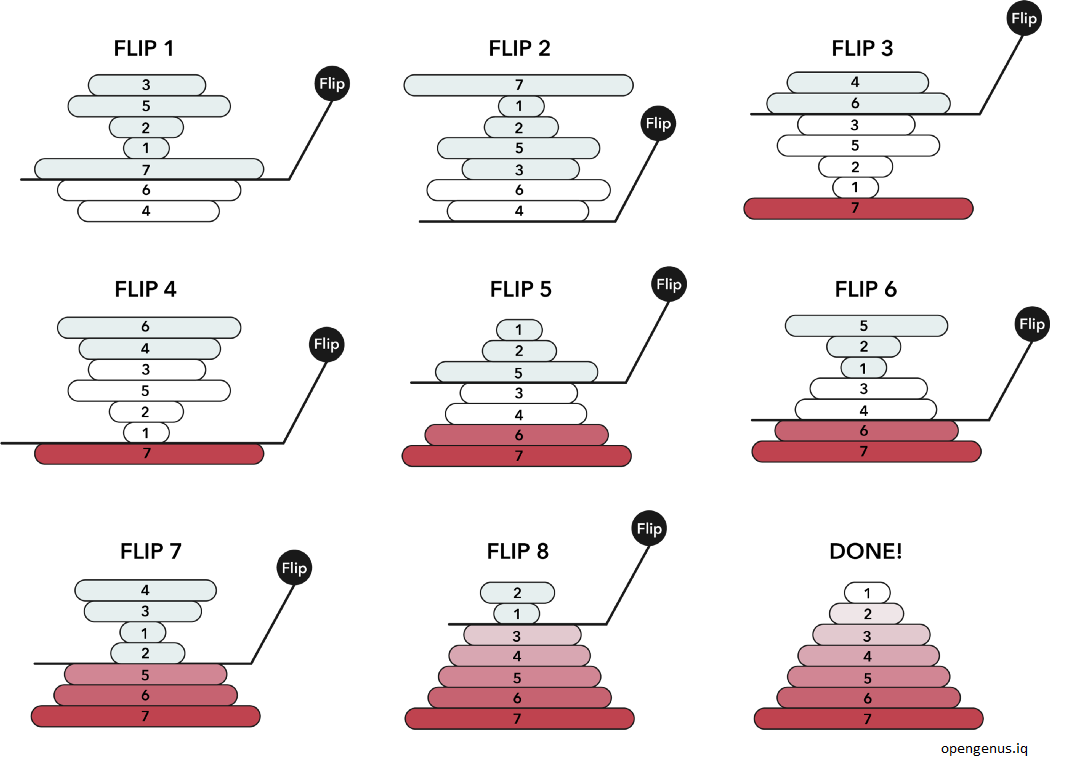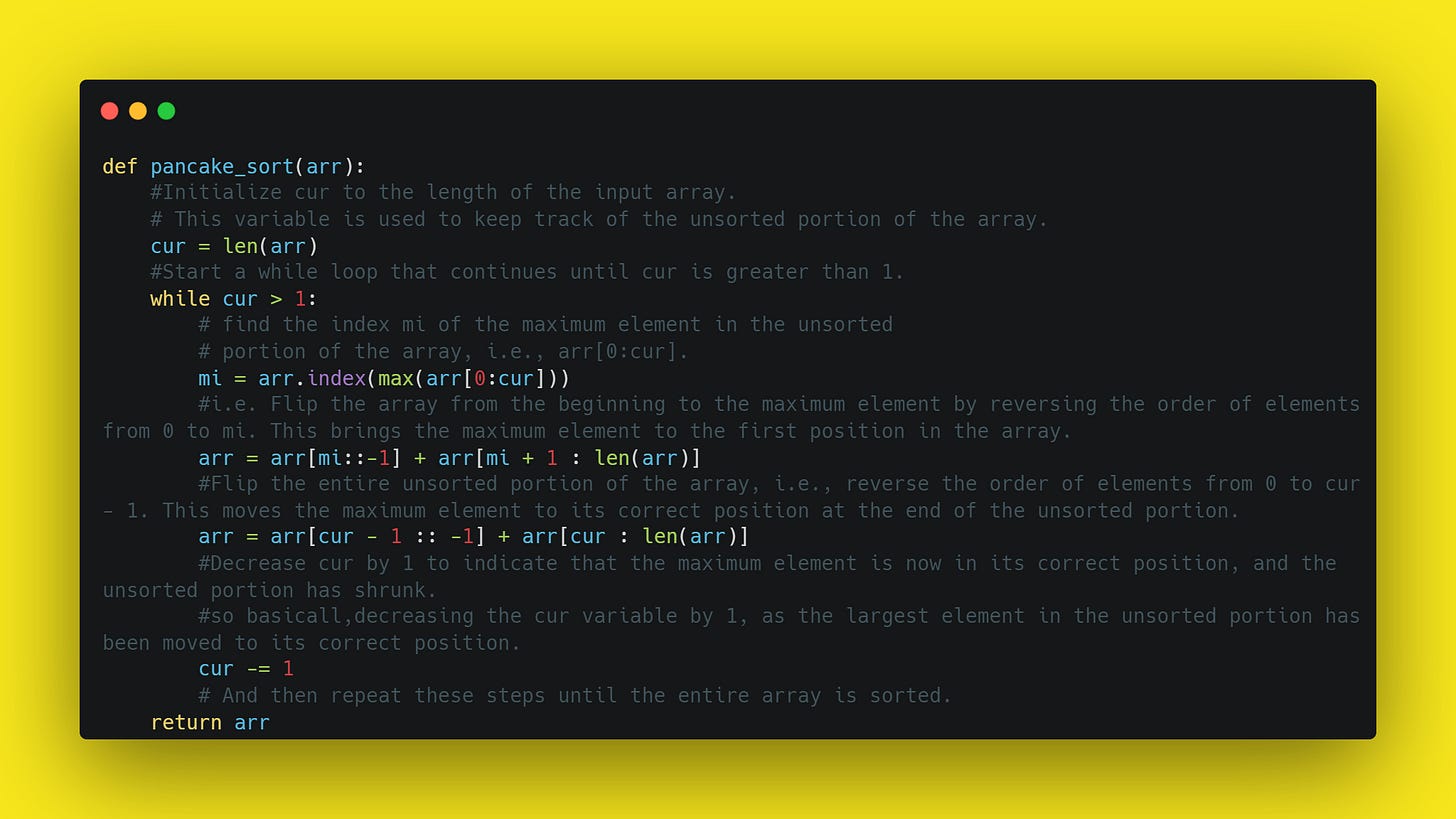A Comprehensive Look at the Pancake Sort Algorithm: Use Cases, Advantages, and Drawbacks
A Comprehensive Look at the Pancake Sort Algorithm: Use Cases, Advantages, and Drawbacks
Introduction
In the world of computer science, sorting algorithms play a critical role in organizing and managing data. They offer a means to efficiently order elements in a specific sequence, which is essential for various applications. One such unique sorting algorithm is the Pancake Sort. In this blog post, we will explore the Pancake Sort algorithm in depth, discuss its use cases, advantages, and drawbacks in comparison to other sorting algorithms.
1. The Pancake Sort Algorithm
Pancake Sort is a comparison-based sorting algorithm that uses a specific operation called "pancake flipping" to sort elements. The algorithm's primary goal is to sort a given sequence of numbers using the minimum number of flips. A flip operation consists of reversing the order of the first k elements in the sequence, where k is a positive integer.
The Pancake Sort algorithm works as follows:
1.1. Algorithm Steps
Find the maximum element in the unsorted portion of the sequence.
Flip the sequence from the start to the position of the maximum element to move it to the beginning.
Flip the entire unsorted portion of the sequence, placing the maximum element at its correct final position.
Repeat steps 1-3 for the remaining unsorted elements until the entire sequence is sorted.
2. When is Pancake Sort Used?
Pancake Sort is not a widely used algorithm in practical applications due to its relatively high time complexity. However, it does have some interesting applications and use cases:
2.1. Teaching and Learning
The algorithm serves as an interesting and engaging way to introduce sorting concepts to students or those learning computer science. Its connection to a real-world scenario (flipping pancakes) helps make the topic more relatable and understandable.
2.2. Robotics and Automation
Pancake Sort has been applied to robotics and automation tasks, where the aim is to minimize the number of actions required to achieve a specific goal, like sorting objects or assembling parts.
3. Advantages of Pancake Sort
3.1. In-Place Sorting
Pancake Sort is an in-place sorting algorithm, meaning it doesn't require additional memory for sorting. This can be advantageous when working with limited memory resources.
3.2. Simplicity
The Pancake Sort algorithm is relatively simple to understand and implement, making it an accessible sorting algorithm for beginners.
4. Drawbacks of Pancake Sort
4.1. Time Complexity
The time complexity of Pancake Sort is O(n^2) in the worst and average cases, making it less efficient than other sorting algorithms like Quick Sort or Merge Sort, which have O(n log n) average time complexity.
4.2. Limited Practical Applications
While Pancake Sort is interesting from a theoretical standpoint, it has limited practical applications due to its inefficiency compared to other popular sorting algorithms.
5. Comparison to Other Sorting Algorithms
In comparison to other sorting algorithms, Pancake Sort has its own unique advantages and disadvantages. Its simplicity and in-place sorting make it an attractive choice for specific cases. However, its time complexity and limited practical applications make it less desirable for general use, where algorithms like Quick Sort, Merge Sort, or Heap Sort often offer better performance.
Conclusion
Pancake Sort is an intriguing sorting algorithm with unique properties and a fascinating real-world analogy. While it may not be the most efficient choice for most applications, it does offer valuable insights into the world of sorting algorithms and serves as an excellent teaching tool. Understanding the intricacies of Pancake Sort, as well as its advantages and drawbacks
Python implementation of the pancake sort algorithm
Unit test for above
class TestPancakeSort(unittest.TestCase):
def test_empty_list(self):
self.assertEqual(pancake_sort([]), [])
def test_single_element(self):
self.assertEqual(pancake_sort([3]), [3])
def test_sorted_list(self):
self.assertEqual(pancake_sort([1, 2, 3, 4, 5]), [1, 2, 3, 4, 5])
def test_unsorted_list(self):
self.assertEqual(pancake_sort([5, 3, 1, 4, 2]), [1, 2, 3, 4, 5])
def test_duplicate_elements(self):
self.assertEqual(pancake_sort([5, 2, 5, 1, 1]), [1, 1, 2, 5, 5])
def test_negative_elements(self):
self.assertEqual(pancake_sort([-1, -5, -3, -2, -4]), [-5, -4, -3, -2, -1])
def test_mixed_elements(self):
self.assertEqual(pancake_sort([-5, 3, -1, 0, 1, -3]), [-5, -3, -1, 0, 1, 3])
if __name__ == '__main__':
unittest.main()
To run the test suite, simply save the test cases in a Python file (e.g., test_pancake_sort.py) alongside the implementation of the pancake_sort function, and then run the test file from the command line:
python test_pancake_sort.py



